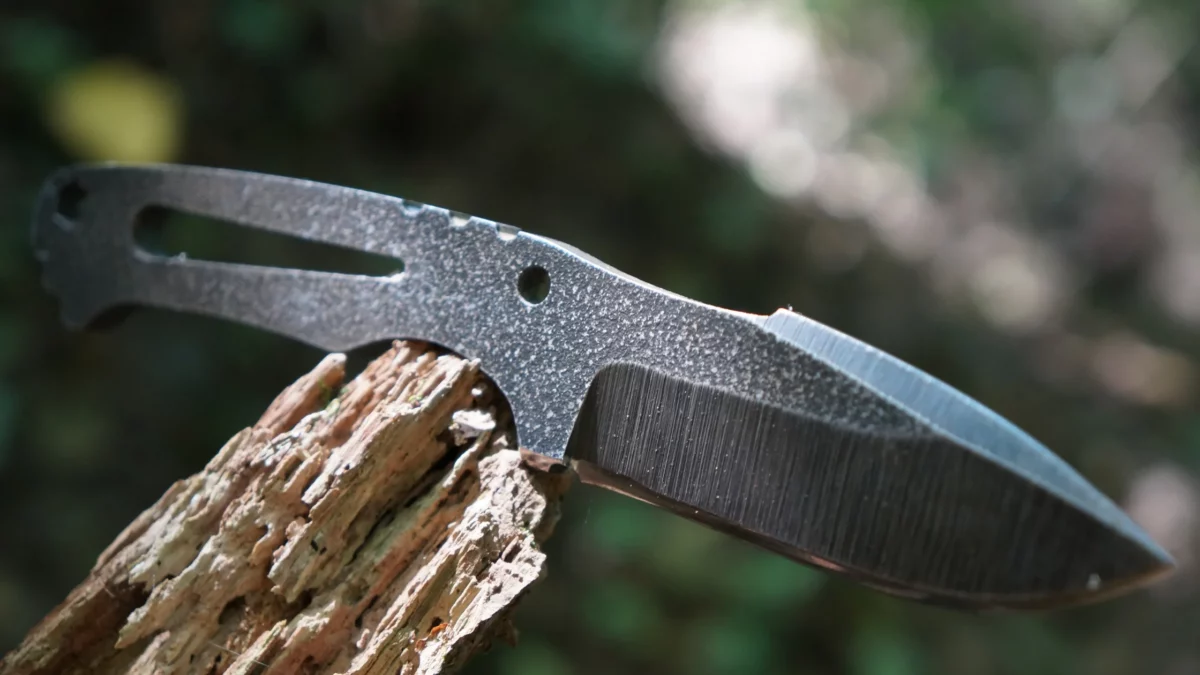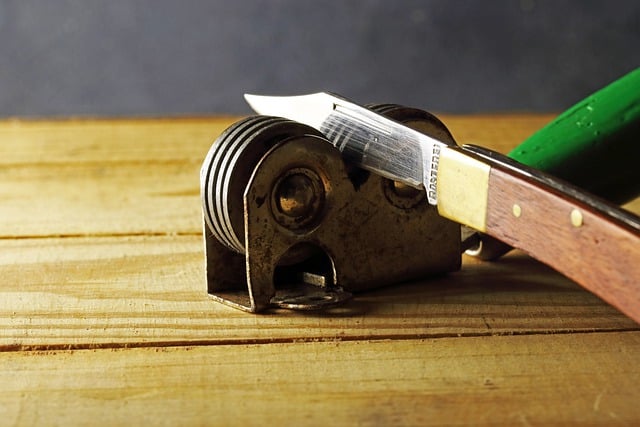Serious cooks tend to use a carbon knife blade since, unlike a stainless knife blade, it is easier to make it sharper, with the effect lasting longer. However, a carbon knife blade is also notorious for its requirement for proper extra care.
A carbon knife steel is more susceptible to natural oxidation, which is seen in the form of an outer layer (patina) and rust. Discoloration takes place when the carbon blade interacts primarily with moisture, acids, and oxygen.
The process of oxidation can be greatly accelerated with the availability of salt or acidic substances.
Unlocking the Secrets
Getting a Perfect Patina on Your Carbon Knife Blade with Vinegar Would you want your carbon knife blade to appear distinctive and beautiful? You need not look farther! Here we will reveal the secrets of vinegar-based gorgeous patina on your carbon knife blade. Apart from its appearance, a patina gives your knife character and uniqueness.
Common household item vinegar can help you turn your carbon knife blade into a piece of art. But just how do you get this amazing patina? We will walk you through the methodically detailed procedure and provide professional advice and tools all along. Whether you like cooking or are a skilled chef, knowing how to make a patina on your carbon knife blade can elevate your gastronomic expertise.
So take your vinegar and get ready to discover the secrets of leaving your carbon knife blade with a brilliant patina. You will be thanked by your knives.
What’s a Patina?
It is the mild oxidation or Magnetite on a carbon knife blade that leads to the formation of a patina, a thin brown or charcoal grey layer.
Does forced Patina prevent rust?
Of course, a patina can also be useful in providing your blade with a distinctive rustic look, possible to incorporate different designs or patterns.
That is why there are knife makers who produce carbon knife blades with factory-made patinas for both aesthetics and the prevention of rust.
1. Clean Your Carbon Knife Blade
Thorough cleaning is also vital since it enables the acidic patina catalyst being used to spread evenly on the surface of the knife.
You can use rubbing alcohol for wiping to achieve a thorough cleaning of the knife blade. Once you have cleaned your knife blade, wipe it dry and avoid touching the steel since that can hinder the process of forcing patina on a carbon knife blade.
2. Mask the Blade Handle
Spreading an acidic patina catalyst onto the handle of your blade will corrode and discolorize it.
3. Vinegar Boiling
When boiling the acid, there is a gas produced and that demands that the windows nearest to you are opened for free, fresh airflow.
The essence of boiling the vinegar is to generally increase the rate of the chemical reaction between the blade and the vinegar in the next step.
4. Dip the Knife Blade in the Boiled Vinegar
The hotter the vinegar, the quicker the formation of patina. You can lift the blade during the process to observe the darkening of the blade and stop the reaction when you have achieved your desired colour.
In case you notice some spots on the knife are still shinny, You can rotate the knife around the vinegar and let it sit for a few more minutes, eventually patina will form on those spots too.
5. Rinse the Blade
Once the knife blade has been rinsed, you may spot some remains that are uneven. That is where the silver polish, not causing abrasion, comes in handy.
Apply a small amount of silver polish on your carbon knife blade until there is an even grey finish.
6. Wipe away any Residues of the Polish
With the resulting finish satisfactory, use oil to wipe the carbon knife blade. That is essential for the removal of any remaining vinegar residues.
7. How To Remove Patina From A Carbon Knife
The easiest way to do this is by use of a polishing chemical compound that contains fine abrasive grit. I recommend Mothers Mag & Aluminium Polish, I have achieved great results with it.
You can also do this by cleaning the knife on a water stone, this may not work sometimes as the patina may be deeply etched.
Things To Remember
- The use of warm or boiled vinegar is preferred since it makes the process of forcing patina on your carbon knife blade to be fast.
- You can also use other acidic patina catalysts such as tomato sauce or yellow mustard. These options are great since they allow easier painting of patina patterns or designs on the carbon knife blade.
- Avoid allowing the vinegar solution to dry on your carbon knife blade as that can result in the formation of spots for discoloration or rust. When the vinegar application is complete, dry your carbon knife blade.
- In case your blade already has sections with patina, when you undertake a forceful patina, those sections will be much darker.
- Always care for your knife even if it has a forced patina to reduce susceptibility to harm.
- Avoid dipping your knife in mustard or vinegar for long since the blade will be more susceptible to harm eventually.
Conclusion
In conclusion, the best and easiest way to develop a patina is to let it develop naturally. When you have to force a patina finish on your carbon knife blade, see to it that the resulting finish is not undesirable, you can repeat the steps severally to get a better finish in this case.
To prevent patina and rusting of the carbon knife blade it is best to avoid a hastened oxidation by cleaning and drying your carbon knife blade frequently, after every task of slicing.
- 【Exclusive Built-in Sharpener】Kitchen knife set with sharpener is amazing. The self-sharpening block keeps the knives razor sharp effectively. It saves you from having to honing blades on a sharpening steel.
- 【Premium Knife Set】Made of forged, high-carbon one-piece German stainless steel, this cutlery knife block set is tarnish-resistant and rust-resistant. The knife set is well-made with a nice appearance. They are sharp, durable, and have good weight and balance, providing effortless cutting. Perfect for both professional chefs and beginner.
- 【Easy to Clean Up】: The kitchen knife set with block is easy and fast to clean. Hand-wash for best results. The blades are stainless and rust-free after going through washing.
- 【Easy to Store】: All knives are stored safely in the knife block with built-in sharpener for space efficient storage. The block is easy to clean and maintain. It is durable and doesn't take up too much space on the counter. Made of natural rubberwood,this wooden kitchen knife block is strong and sturdy to hold heavy knife sets and is finished with a beautiful veneer that’s naturally resistant to grime and easy to wipe clean
- 【Best Sharp Knife Set】Optimized weight and good balance make this kitchen knife set fit nicely in the palm of hand. Exclusive taper grind edge technology provides optimum sharpness for precise cutting and is easy to re-sharpen. The knives are sturdy and can handle heavy chopping. The knives set stays sharp even after extended use.
- Multipurpose Knife Set: This kitchen knives set includes 8" Chef Knife, 8" Slicing Knife, 7" Santoku Knife, 8" Serrated Bread Knife, 5" Utility Knife, 3.5" Paring Knife, Kitchen Shears and 6 pcs Blade Guards
- Anti-rust coating: The healthy anti-rust coating protects the knife from oxidation and dishwasher safe, while the non-stick coating ensures the blades stay clean all day long
- Easy to carry: Each knife comes with a blade guard for safe, compact storage in your kitchen cupboard. These knives are also easy to carry when camping or storing in your RV
- Perfect Holiday Gift: Ideal for kitchen enthusiasts or new cooks, this knife set meets all cooking needs. It makes an excellent holiday gift for family, friends, lover and colleague
- Lifetime Warranty: Every knife set is backed by rigorous quality inspection, we provide a lifetime warranty for every customer, ensuring superior customer service and peace of mind with every purchase
- ULTRA-SHARP BLADES: Superior professional-level sharpness that ensures precision cutting.
- THE LAST KNIFE YOU’LL EVER NEED TO BUY: German Engineered Knife Informed by over 100 Years of Mastery. HENCKELS knives are built to last.
- EFFORTLESS CUTTING: Enjoy easy cutting with minimal effort with this lightweight, easy-to-use knife.
- SET INCLUDES: 3-inch paring knife, 5-inch serrated utility knife, 7-inch santoku knife hollow edge, 8-inch chef's knife, 8-inch bread knife, 4.5-inch steak knife set of 6, professional honing steel, kitchen shears, and hardwood knife block
- QUICK CLEAN UP: No-fuss cleanup, in the dishwasher or by hand. Stain and rust-free blades.






